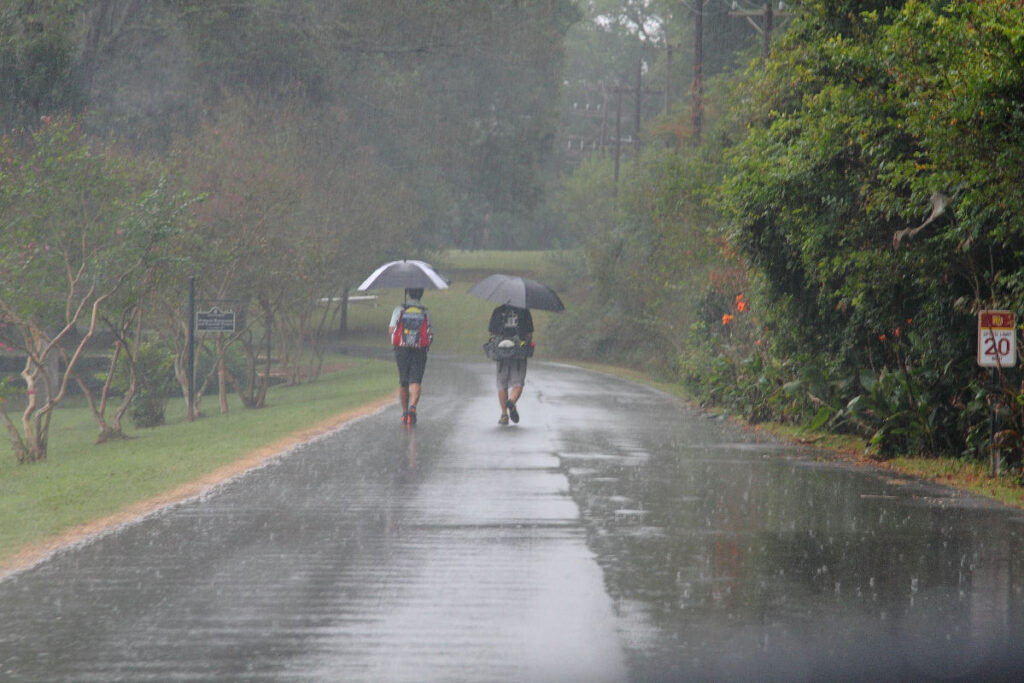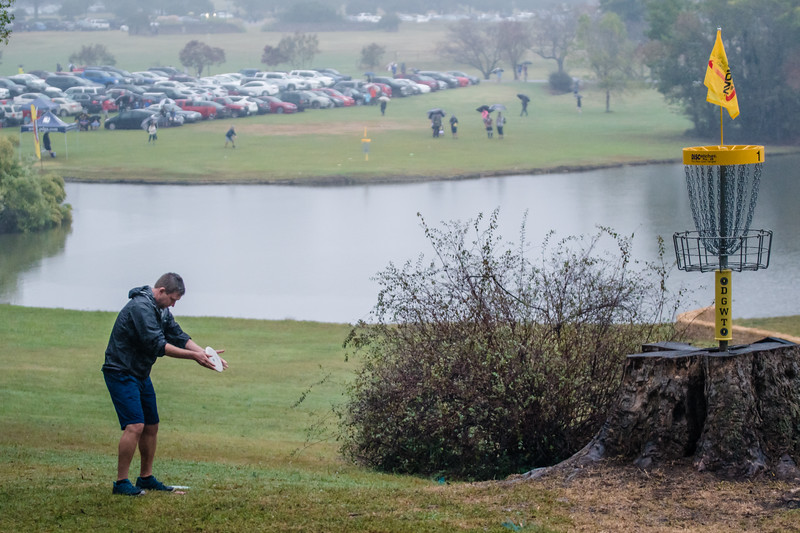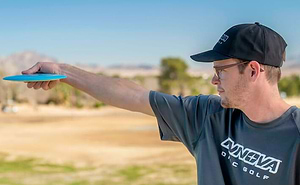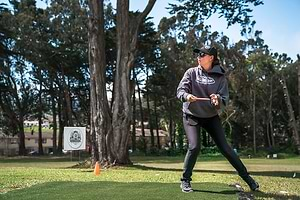How Weather Can Affect Disc Selection
TOC
Table of Contents
Many sports are affected by weather, and disc golf is no different. In fact, the weather conditions can make a huge difference when it comes to the shots you try to throw and the discs you choose to use during your round. As we head into the fall and winter seasons, the weather is going to impact us disc golfers more and more.
So, how will weather affect what discs you choose to throw? What types of plastics are you reaching for to have a better grip in the rain or snow? Which discs are best to throw in a strong headwind or crosswind? What about when you have a nice tailwind behind you? How are you building your bag on a bad weather day?

Let’s break each common weather condition down one at a time and talk about disc selection.
Wind
Wind is the bane of many disc golfers’ existence, and it can be a challenge any time of the day, any day of the week or any season of the year. Some parts of the Midwest almost always seem to be windy and the local players know how to deal with it. Almost all of us probably have a local disc golf course in mind that tends to get really windy—perhaps all the time or during certain times of day (often the late afternoon in many places).
So, how do you deal with disc selection in the wind? Throwing in windy conditions is certainly easier said than done, but there are some general rules of thumb. If you are throwing into a stiff headwind, you should try to throw your disc as flat as possible. If you throw it nose-down, the headwind will push it straight to the ground. If you throw it too nose-up, then it will get caught by the strong wind and not go very far.
Unless you’re throwing with a tailwind, you’ll also want to use a heavier and more overstable disc. Higher-speed drivers will more naturally cut through the wind than a mid-range disc, but weight and stability are usually the most important factors. A straight headwind will make any disc less stable, so understable discs are going to want to flip over to the right for a righty backhand throw. This is where the turn rating of the flight numbers will be important to look at. A max-weight 175g Star Firebird with a 0 turn is going to hold a dependable flight line better than a 167g Champion Leopard3 with a -2 turn rating. Also, discs with flatter tops are usually handle a headwind better than those with domey shapes (i.e., “pop-tops”).
On the flip side, a strong tailwind is going to make your flying discs more stable. You can utilize more understable discs for downwind shots. If you are wanting max distance in a tailwind, grab a lighter disc with a lot of glide and take advantage of those lighter-weight pop-top molds to ride the tailwinds even further. You’ll also want to work on releasing the disc on a higher trajectory with a slightly more nose-up release angle so the wind can catch underneath the rim and maximize the glide.
Things get even less simplified once you start dealing with crosswinds and diagonal winds that will want to do all sorts of different things to your discs during flight. Stability, weight and release angle will all be important factors when dealing with any type of crosswind, tailwind or headwind. Don’t be afraid to go out and do some experimental fieldwork on really windy days. Throw all your discs and move around to get different wind directions. See how each disc reacts with each type of flight path (hyzer, anhyzer, flat, forehand, etc.) in each wind condition. This is ultimately the best way to learn which shot shapes and discs you are going to be most comfortable with on a windy day.
Rain

A lot of disc golfers hate rain more than any other adverse weather condition. Wet discs really are the worst to try and throw. Even playing a dewy course in the early morning or at a park where they run the sprinklers a lot will give you the same challenge as rain. It’s hard to keep your discs dry and it’s hard to get a confident grip on a wet disc.
When playing in the rain, your discs won’t be affected in flight as much as they will be on a windy day. It’s mostly about having a good grip. Many players love Innova’s GStar plastic for this very reason. Gstar gives dependable flight characteristics that hold up well over time, while also offering a grippier-feeling plastic than regular Innova Star or Champion discs. Softer DX, XT and R-Pro (rubber blend) plastic also feel better in the hands of many players on wet days.
Another thing you can consider in the rain is rim depth. Most disc golfers will have less trouble throwing wet putters, mid-ranges and fairway drivers than high-speed distance drivers with very shallow rims. You may want to sacrifice a little distance for control by discing down to a slower disc with a deeper rim that allows you to get a better grip.
Putting confidently in the rain is a different story altogether. It’s mostly about doing everything you can to keep your putters as dry as possible. Carry an umbrella, chalk bag and extra towels if needed. Pro tip: hang your towels underneath your open umbrella (rather than hanging from your bag) to keep them out of the rain. If you can keep your putter dry, you will be a happier disc golfer!
Snow and Cold
Whether there’s a blanket of snow on the ground or it’s just really, really cold outside, you will be facing some more unique challenges. Again, it’s mostly about grip, as it’s hard to get a good grip on the disc when your fingertips are numb. Some cold weather players have adapted to wearing a glove on their throwing hand at all times, and there are some great gloves out there made specifically for disc golf.
One other factor to consider in the snow or cold weather is the firmness of the plastic. Freezing conditions make the discs much stiffer. This can be really bad for the discs if you hit rocks or trees. They could even crack or shatter if it’s cold enough outside. Utilize softer plastic like R-Pro or GStar. A Gstar driver will feel and fly more like a stiff Star driver on a chilly day. Cold weather tends to make any disc a more stable disc.
Last but not least, you’ll want to use bright-colored discs when there is snow on the ground. This is simply to reduce your risk of losing your favorite discs. They can dig right into a snow bank and leave little trace behind. Players used to playing in the snow will have all sorts of other tips and tricks, such as taping a colorful ribbon or spraying the disc with dye or colored powder that will help you find it easier when it gets buried in deep snow.
If you love disc golf and want to play no matter what the weather conditions are, you are going to want to learn how to adapt your mindset, disc selection and shot selection, as well as additional equipment and accessories to bring with you to the course. Your round may not go as smoothly as it will on a calm, sunny day, but you can still have fun. If you are in a tournament with rough weather, just remember that all the players are getting the same conditions and it’s still equal footing. They will be struggling to deal with the conditions just as you are!
Personalized Disc Recommendations
Just answer a few questions and we’ll send you personalized recommendations within 24 hours.
GET PRO TIPS


